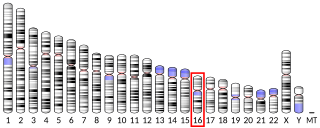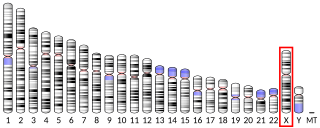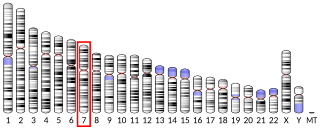
Cell adhesion is the process by which cells interact and attach to neighbouring cells through specialised molecules of the cell surface. This process can occur either through direct contact between cell surfaces such as cell junctions or indirect interaction, where cells attach to surrounding extracellular matrix, a gel-like structure containing molecules released by cells into spaces between them. Cells adhesion occurs from the interactions between cell-adhesion molecules (CAMs), transmembrane proteins located on the cell surface. Cell adhesion links cells in different ways and can be involved in signal transduction for cells to detect and respond to changes in the surroundings. Other cellular processes regulated by cell adhesion include cell migration and tissue development in multicellular organisms. Alterations in cell adhesion can disrupt important cellular processes and lead to a variety of diseases, including cancer and arthritis. Cell adhesion is also essential for infectious organisms, such as bacteria or viruses, to cause diseases.

Integrin beta-1 (ITGB1), also known as CD29, is a cell surface receptor that in humans is encoded by the ITGB1 gene. This integrin associates with integrin alpha 1 and integrin alpha 2 to form integrin complexes which function as collagen receptors. It also forms dimers with integrin alpha 3 to form integrin receptors for netrin 1 and reelin. These and other integrin beta 1 complexes have been historically known as very late activation (VLA) antigens.

CD49d is an integrin alpha subunit. It makes up half of the α4β1 lymphocyte homing receptor.

Leukocyte antigen CD37 is a protein that in humans is encoded by the CD37 gene.

Leukocyte surface antigen CD53 is a protein that in humans is encoded by the CD53 gene.

CD63 antigen is a protein that, in humans, is encoded by the CD63 gene. CD63 is mainly associated with membranes of intracellular vesicles, although cell surface expression may be induced.

CD151 molecule, also known as CD151, is a human gene.

G protein-coupled receptor 56 also known as TM7XN1 is a protein encoded by the ADGRG1 gene. GPR56 is a member of the adhesion GPCR family. Adhesion GPCRs are characterized by an extended extracellular region often possessing N-terminal protein modules that is linked to a TM7 region via a domain known as the GPCR-Autoproteolysis INducing (GAIN) domain.

CD81 molecule, also known as CD81, is a protein which in humans is encoded by the CD81 gene. It is also known as 26 kDa cell surface protein, TAPA-1, and Tetraspanin-28 (Tspan-28).

CD47 also known as integrin associated protein (IAP) is a transmembrane protein that in humans is encoded by the CD47 gene. CD47 belongs to the immunoglobulin superfamily and partners with membrane integrins and also binds the ligands thrombospondin-1 (TSP-1) and signal-regulatory protein alpha (SIRPα). CD-47 acts as a don't eat me signal to macrophages of the immune system which has made it a potential therapeutic target in some cancers, and more recently, for the treatment of pulmonary fibrosis.

CD82, or KAI1, is a human protein encoded by the CD82 gene.

Tetraspanin-7 is a protein that in humans is encoded by the TSPAN7 gene.

CUB domain-containing protein 1 (CDCP1) is a protein that in humans is encoded by the CDCP1 gene. CDCP1 has also been designated as CD318 and Trask. Alternatively spliced transcript variants encoding distinct isoforms have been reported.

Uroplakin-1a (UP1a) is a protein that in humans is encoded by the UPK1A gene.

Tetraspanin-13 is a protein that in humans is encoded by the TSPAN13 gene.

Tetraspanin-4 is a protein that in humans is encoded by the TSPAN4 gene.

Prostaglandin F2 receptor negative regulator is a protein that in humans is encoded by the PTGFRN gene. PTGFRN has also been designated as CD315.

Tetraspanin-8 is a protein that in humans is encoded by the TSPAN8 gene.

Transmembrane 4 L6 family member 5 is a protein that in humans is encoded by the TM4SF5 gene.

Tetraspanin-12 (Tspan-12) also known as tetraspan NET-2 (NET2) or transmembrane 4 superfamily member 12 (TM4SF12) is a tetraspanin protein that in humans is encoded by the TSPAN12 gene. Tetraspanin-12 is found in the membrane of a variety of cells. It has an unusually long C-terminal intracellular tail of approximately 60 amino acids.



















